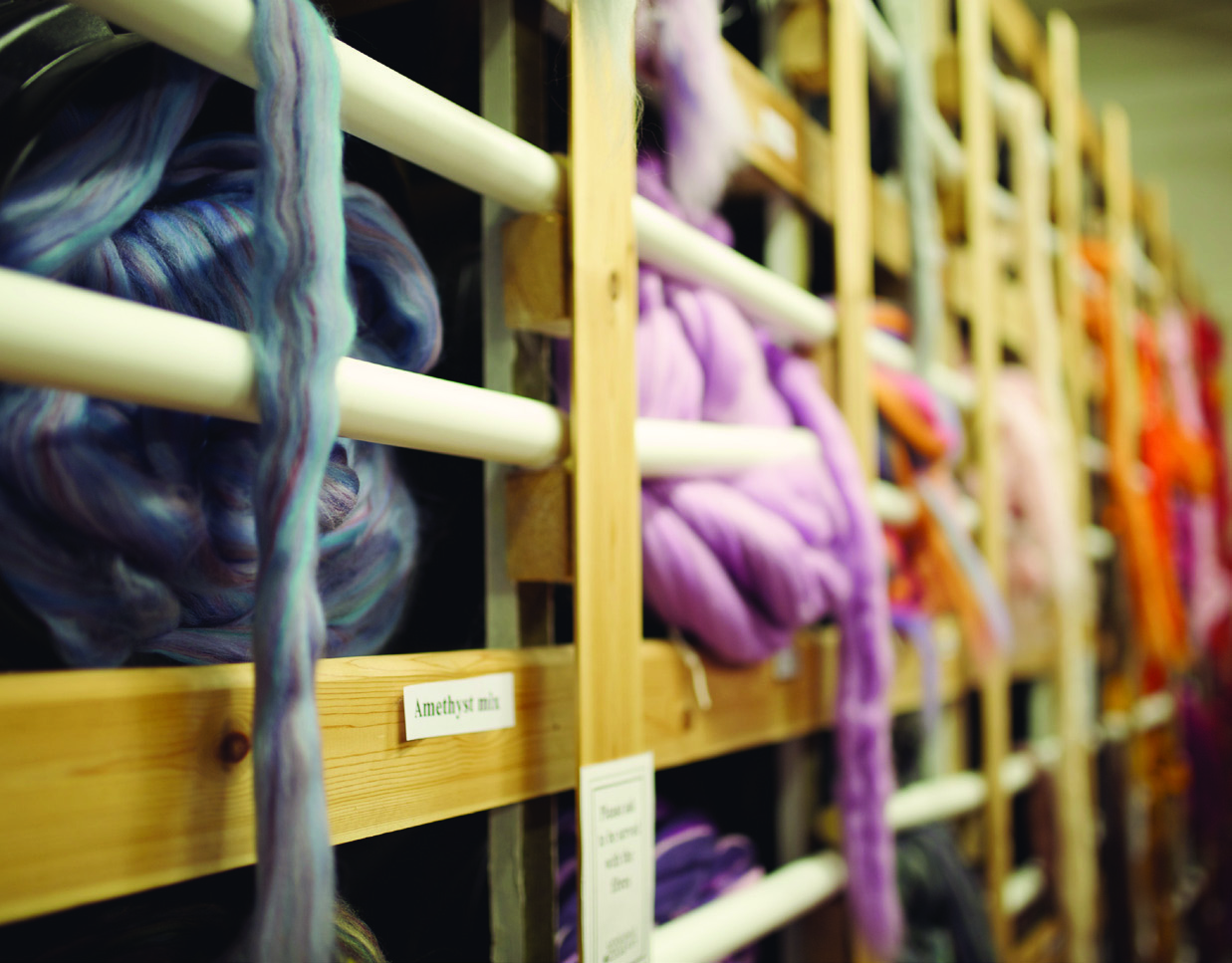“I didn’t appreciate the effort that goes into making one ball of yarn, that’s for sure,†laughs Charmaine Alexander, owner of The Sewing Shop Canterbury. She’s reflecting on a “woolly adventure†in which Charmaine and her team toured mills and factories to discover how British yarn is produced. “The idea came from our recent attempts to source British yarns at a competitive price,†she explains.
“Customers were coming in and enquiring about British yarn but we needed to find something that would be comparable quality to our Italian and Turkish supplies. Although we had some designer yarns in stock, they weren’t British and the price point makes them more of a niche yarn than something that’s accessible for everyone.â€
Eventually, Charmaine discovered Woolyknit, located at the Warth Mill in Diggle, Yorkshire. “Their yarns are wonderful, and available at a competitive price. But the difficulty of our search for the perfect, and affordable, British yarn, made us keen to find out a bit more about our domestic wool industry. We thought it would be a good thing for us and our customers if we could follow the journey it takes from the sheep’s back to the store.â€

Charmaine regularly organises “enrichment†experiences for her staff – recent excursions have included a tour of the textile quarter of Paris – and says the trips enhance team spirit as well as bringing
bags of enthusiasm and product knowledge back to the shop. The co-ordination of this year’s adventure was assisted by Roger Shepley, director of Woolyknit, who invited the team up to the mill. There they settled gently into their adventure with a felting workshop before taking a tour of the Woolyknit mill. “The next morning we crossed Saddleworth Moor, where we saw lots of sheep, on our way to Haworth’s scouring factory,†says Charmaine. “You turn up a street in Bradford and suddenly find yourself in yarn city, with fleeces everywhere. There are bales of fleeces piled high, from all over the world. We saw some from Norway, which were quite coarse and oily, and then fleeces from Syria that were quite dry. Then you go inside the factory and find a huge plant shaking all the fleeces to get the dirt out. Then they are washed, tumble dried, combed through, dyed and spun, before going off to the Hollings mill to be balled.
At Hollings we were dazzled by the array of yarns and colours. They were steaming all the yarns to fluff them up and to pre-wash them so they don’t shrink in the first wash, before they are balled.â€
Charmaine admits she had no idea how many industries and even sports use British wool in their products. “We discovered that British wool is used for coach and plane seats, for example, because the wool doesn’t burn it just smoulders. It’s also used for military uniforms, the linings of car headlights, tennis balls, snooker table baize, and we even saw some unusual wool coffins made from boiled wool fabric!â€
With a varied programme of crochet workshops coming up at the shop, Charmaine says they are finding that crochet is overtaking knitting in popularity now. “When we offered free crochet and knitting taster workshops, the crochet ones were packed out, but not so much the knitting, it was very interesting. Crochet is definitely more fashionable at the moment and seems to be attracting a younger crowd along with the older ladies who have always crocheted, so it brings the generations together.
So what was the highlight of the trip? “There wasn’t one ‘wow’ moment, everything was fantastic,†says Charmaine. “Seeing how much effort goes into every stage of the yarn, the scale of the mills, and the fact that nothing is wasted. The attention to detail amazed all of us – it really took our breath away. We got a glimpse of a secret world most people never get to see. It made us realise that it’s very skilled work that needs plenty of hands-on involvement from the people who work in the mills.â€
The team returned from their trip enthused and inspired by the quality of British yarn, which they now feel reassured equals, if not betters, anything the Italians can produce! But Charmaine and the girls are already planning what to take in on their next tour. “We’d love to see yarn being dyed, and I’d also like to see more varieties and breeds of sheep – I’d like to put some faces to names!â€
Look out for The Sewing Shop Canterbury’s new website at www.thesewingshopcanterbury.co.uk and check out the new autumn workshop programme. Charmaine and the team are busy planning activities
to celebrate British Wool Week, including free crochet workshops – keep an eye on the shop’s new blog or Facebook page at www.facebook.com/thesewingshopcanterbury for details.
Tell us your thoughts below.
Sorry, there have been no comments on this blog post yet - why not be the first to leave your opinion?